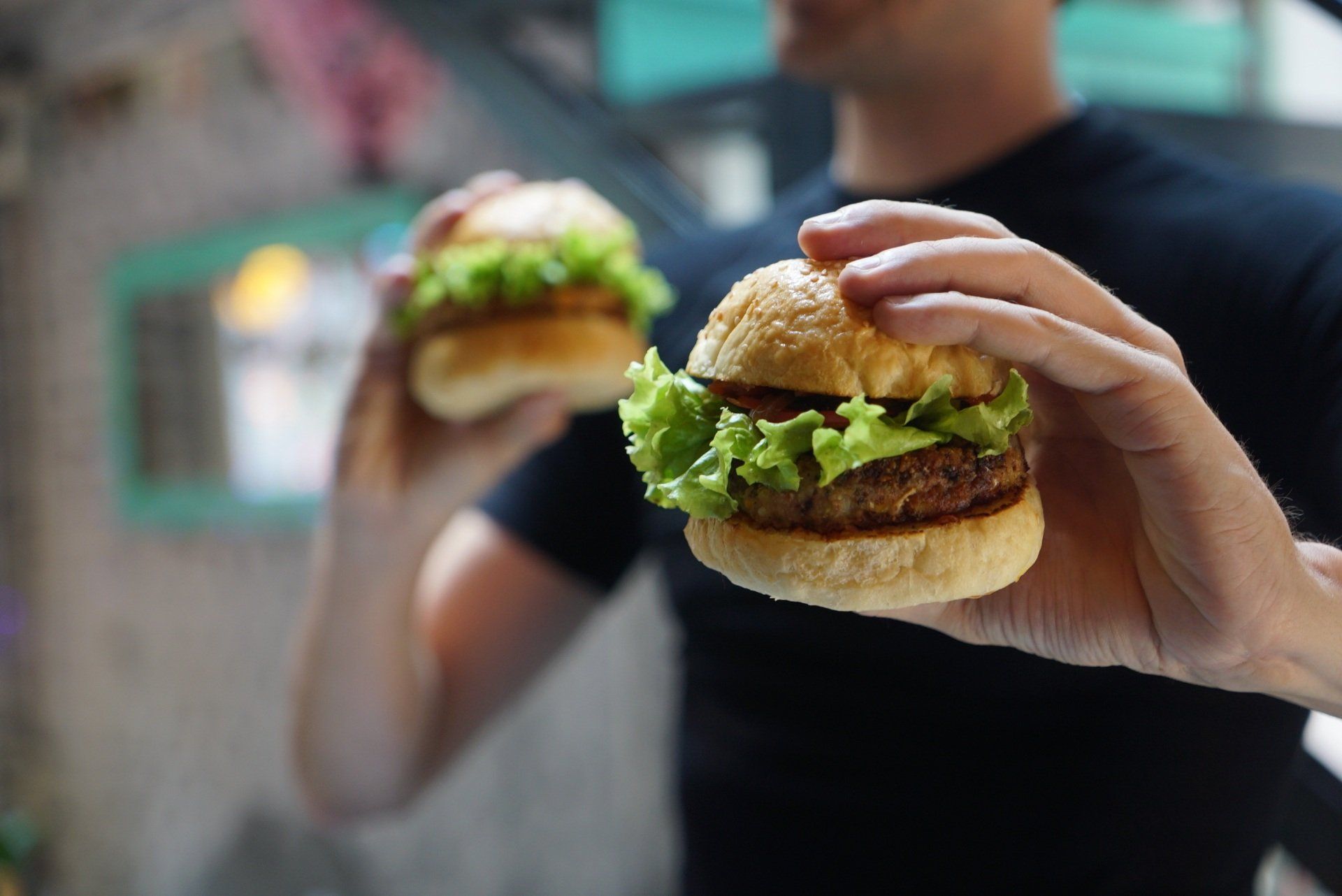How To Stop Overeating Fattening Food
Overeating Oreos (or any other tasty treat, for that matter) can be a real challenge, but there are a few things you can do to avoid going overboard.
First and foremost, it's important to understand that overeating is a complex phenomenon that is influenced by a variety of factors, including genetics, environment, and psychological factors. With that said, recent research has identified a few strategies that can be effective in helping to curb overeating.
One strategy that has been shown to be effective is to practice mindful eating. This involves paying attention to the sensations of hunger and fullness, and eating in response to those sensations, rather than in response to external cues like the clock or the presence of food. Mindful eating can help you to become more aware of your eating habits, and may make it easier to stop eating when you're full (1).
A Little More Detail On Mindful Eating
Mindful eating is a technique that involves paying attention to the sensations of hunger and fullness, and eating in response to those sensations, rather than in response to external cues like the clock or the presence of food. It is a powerful tool that can help you to become more aware of your eating habits, and make it easier to stop eating when you are full.
Slow Down
One of the key components of mindful eating is to slow down and pay attention to the food you are eating. This means taking the time to savor each bite, and paying attention to the flavors, textures, and smells of the food. It also means avoiding distractions like TV or phone while eating. By slowing down and paying attention to your food, you can become more aware of when you are starting to feel full, and stop eating before you reach the point of overeating.
Engage
Another important component of mindful eating is to be present and fully engaged in the eating experience. This means avoiding multitasking while eating, and instead focusing on the sensations of hunger and fullness. By being present and fully engaged in the eating experience, you can become more aware of the triggers that may lead to overeating, such as emotions or stress, and learn how to respond to those triggers in a more mindful way.
Eat With Intention
Another key aspect of mindful eating is to eat with intention. This means deciding ahead of time what, when and how much to eat, rather than eating impulsively or in response to external cues. It also means taking the time to plan and prepare meals and snacks in advance, rather than relying on convenience foods or eating out.
Start Small
It's also important to understand that mindful eating is a process that takes time and practice. It can be helpful to start with small changes, such as eating a little more slowly, or paying more attention to the flavors of the food. As you become more comfortable with mindful eating, you can gradually add more techniques, such as paying attention to hunger and fullness, or planning your meals and snacks in advance.
It's also important to note that mindful eating can be beneficial for everyone, not only those who struggle with overeating or binge eating disorder. It is a tool that can help you to develop a healthier relationship with food, by becoming more aware of their eating habits and learning how to respond to hunger and fullness in a more mindful way.
Use Smaller Plates & Cutlery
Another strategy that has been shown to be effective is to use smaller plates and bowls. Research has shown that people tend to eat more when they are presented with larger portions (2). By using smaller plates and bowls, you can trick your brain into thinking you're eating more, which can help you to feel more satisfied with less food.
Why? A phenomenon known as "portion size illusion" or the "Delboeuf illusion". This phenomenon is based on the idea that our perception of the amount of food is influenced by the size of the plate or bowl it is served on.
More Food More Eating
Again, studies have shown that when people are presented with larger portions of food, they tend to eat more, regardless of their appetite or hunger level (1,2). This is because larger portions can make the food appear more scarce, and therefore, more desirable. Additionally, larger portions can also make it harder for people to gauge the appropriate serving size, resulting in overeating.
The Illusion
On the other hand, using smaller plates and bowls can help to create the illusion of a larger portion, making the food appear more abundant and satisfying. This can help to reduce the amount of food consumed, and make it easier to stop eating when you feel full (3,4).
Furthermore, research has shown that reducing the size of the plate or bowl can lead to a decrease in overall energy intake, which can be beneficial for weight management (5,6).
It's important to note that using smaller plates and bowls is not a magic solution to overeating, but rather one of the many strategies that can be used to help people eat less. It works best when combined with other strategies such as mindful eating, planning ahead and savoring food.
Removing Temptation
A third strategy is to remove the temptation altogether. Research suggests that out-of-sight, out-of-mind works when it comes to avoiding overeating.
The idea behind this strategy is to make it more difficult for you to access foods that you are likely to overeat.
For example, if you know that Oreos are a trigger food for you, one way to remove the temptation is to not have them in your house. By not having them available, you'll be less likely to eat them because they are not within reach. This strategy can also be applied to other tempting foods such as chips, cookies, or candy.
Invisibility Is Key
Another example of removing temptation is to avoid keeping tempting foods visible or easily accessible. For example, if you have a tendency to overeat when you're watching TV or working at your computer, one way to remove the temptation would be to keep the foods that you're likely to overeat out of sight, such as in a cabinet or in a closed container. This way, you'll have to make an effort to access them, which can make it less likely that you'll overeat.
Temptation in Social Spaces
Removing temptation can also be applied in social situations. For example, if you know that you tend to overeat when you're at parties or gatherings, one way to remove the temptation would be to avoid going to the table where the foods are, or to position yourself away from the table. Additionally, you can also bring your own healthy snacks or meals, so you have something to munch on that aligns with your goals.
Plan Ahead
Another strategy is to plan ahead. If you know you're going to have a tough time resisting Oreos (or any other tempting food), plan to have a healthy snack or meal before you're in the presence of the Oreos. This will help you to go into the situation with a full stomach, which can make it easier to resist the temptation to overeat.
Planning ahead is crucial to avoid overeating. The idea behind this strategy is to plan for potential situations where overeating may occur, and to have a plan in place to respond to those situations in a healthy way.
For example, let's say you know that you're going to be attending a party where there will be a lot of tempting foods, such as Oreos. One way to plan ahead for this situation would be to eat a healthy meal or snack before you go to the party. This will help to ensure that you're not overly hungry when you arrive, which can make it easier to resist the temptation to overeat. Additionally, you can bring your own healthy snacks or meals, so you have something to munch on that aligns with your goals.
Emotional Eating
Another example of planning ahead is to have a plan in place for dealing with emotional eating. For example, if you know that you tend to overeat when you're feeling stressed or anxious, you can plan ahead by having healthy coping mechanisms in place, such as going for a walk, calling a friend, or practicing mindfulness techniques.
Planning ahead can also be helpful for people who struggle with impulse eating. For example, if you tend to overeat when you're watching TV or working at your computer, one way to plan ahead would be to remove any tempting foods from your immediate surroundings, and instead, have healthy snacks or meals within reach. You can also plan to have a set time for your meals and snacks, so you don't eat impulsively.
In summary, planning ahead is a strategy that can help you to avoid overeating by preparing for potential situations where overeating may occur, and having a plan in place to respond to those situations in a healthy way. This can include things such as eating a healthy meal or snack before going to a party, having healthy coping mechanisms in place for dealing with emotional eating, or removing tempting foods from your immediate surroundings and having healthy snacks or meals within reach.
Focus On Pleasure
Finally, try to focus on the pleasure of eating, rather than the quantity. Research suggests that people who savor their food and pay attention to the flavors, textures, and smells of what they're eating tend to eat less overall, and enjoy their food more (5).
Focusing on the pleasure of food can help you avoid overeating by shifting the focus from the quantity of food to the quality of the eating experience.
For example, rather than focusing on how much Oreos you're eating, focus on the flavors, textures, and smells of the Oreos. Take the time to savor each bite, and pay attention to the pleasure that it brings. By doing this, you will become more mindful of your eating experience and it will help you to be more aware of when you are starting to feel full, and stop eating before you reach the point of overeating.
Eat Slowly
Another example of focusing on the pleasure of food is to eat slowly. Eating slowly gives your brain enough time to receive the signals of fullness and satisfaction, which can help to reduce the amount of food consumed. Additionally, by eating slowly, you can savor the flavors and the pleasure that food brings, which can help to increase the satisfaction you get from the food, which can decrease the urge to overeat.
Extend The Pleasure Into Planning
Focusing on the pleasure of food can also be applied to meal planning and preparation. For example, rather than focusing on how much food you're eating, focus on the quality of the food. Plan meals and snacks that are both healthy and delicious. Preparing meals with a variety of flavors, colors, and textures can make the meal more enjoyable and satisfying, which can make it less likely to overeat.
Overeating Oreos (or any other food) can be a real challenge, but by understanding the causes of overeating, and using strategies such as mindful eating, using smaller plates, removing temptation, planning ahead and savoring your food, you can make it easier to avoid overeating.
SUMMARY
In this conversation, we discussed several strategies that can help you to avoid overeating Oreos and other tempting foods. These strategies include:
- Mindful eating: This involves paying attention to the sensations of hunger and fullness, and eating in response to those sensations, rather than in response to external cues like the clock or the presence of food. Mindful eating can help you to become more aware of your eating habits, and make it easier to stop eating when you are full.
- Using smaller plates and bowls: Research has shown that people tend to eat more when they are presented with larger portions, regardless of their appetite or hunger level. Using smaller plates and bowls can help to create the illusion of a larger portion, making the food appear more abundant and satisfying, and can lead to a decrease in overall energy intake, which can be beneficial for weight management.
- Removing temptation: Out-of-sight, out-of-mind works when it comes to avoiding overeating. If you don't have the Oreos in your house, you're less likely to eat them.
- Planning ahead: If you know you're going to have a tough time resisting Oreos (or any other tempting food), plan to have a healthy snack or meal before you're in the presence of the Oreos. This will help you to go into the situation with a full stomach, which can make it easier to resist the temptation to overeat.
- Savoring food: Research suggests that people who savor their food and pay attention to the flavors, textures, and smells of what they're eating tend to eat less overall, and enjoy their food more.
It's important to note that these strategies should be used together, and mindful eating should be the foundation of all these strategies.
References:
- Kristeller JL, Wolever RQ. Mindfulness-based eating awareness training for treating binge eating disorder: the conceptual foundation. Eating disorders. 2011;19(1):49-61.
- Wansink B, van Ittersum K. Portion size me: downsizing our consumption norms. Journal of the American Dietetic Association. 2007;107(7):1103-1106.
- Wansink B, Painter JE, North J. Bottomless bowls: why visual cues of portion size may influence intake. Obesity Research. 2005;13(1):93-100.
- Hetherington MM, Regan MF. The effect of television advertisements for foods on actual consumption. Appetite. 2001;36(1):41-46.
- Wansink B, Sobal J, Levitsky DA. Mindless eating: the 200 daily food decisions we overlook. Environment and behavior. 2005;39(1):106-123.










